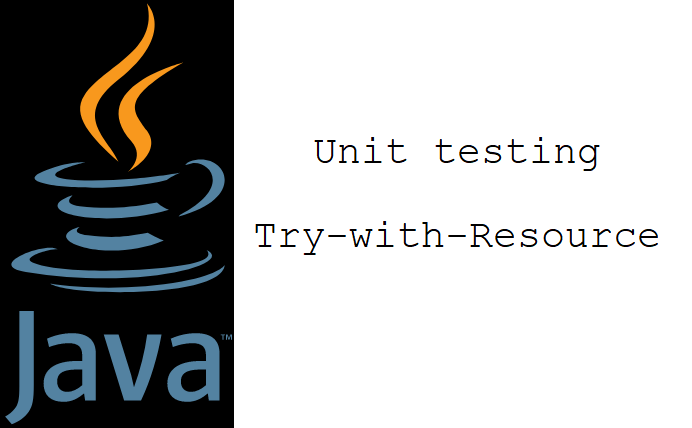Java’s try-with-resource is a convenient syntactic shortcut. It frees developers from keeping track of closeable resources and closing in a finally block

Unit testing try-with-resource
Overview
Some of us may remember doing such boring and lengthy try-finally-if-not-null-close() A LOT!
On a typical day, we performed these steps a dozen times:
- Obtained a DB connection, and execute a query within the
try {...} - And then, to avoid connection leak, we must close the statement and DB connection within the
finally {...}block. - Because
getConnection(),prepareStatment()andexecuteQuerycould fail,stmtandconncould benull. Hence we performed the not-null check prior to invokeclose()methods.
public void executeQuery(String sql) throws SQLException {
Connection conn;
PreparedStatement stmt;
try {
conn = getConnection();
stmt = conn.prepareStatement(sql);
stmt.executeQuery();
}
finally {
if (stmt != null) {
stmt.close();
}
if (conn != null) {
conn.close();
}
}
}
With try-with-resource, the above can be as short as below, freeing us to focus on other things such as data modeling or tuning query performance.
public void executeQuery(String sql) throws SQLException {
try (
Connection conn = getConnection();
PreparedStatement stmt = conn.prepareStatement(sql);
){
stmt.executeQuery();
}
}
It benefits include:
- Automatically close
Closeableresources such as File, Input/OutputStream, DB Connection, Statement… - It gracefully handles
nullresources - It closes resources in Last-In-First-Out order so that nothing is left out and all get closed in the correct order
You can find out more about this feature in the official Java tutorial
Does it really?
I’m a fan of unit testing. And being skeptical as I am, I wanted to verify whether it really does what it says. So I wrote a few unit tests.
Yes, it really closes Closeable resource
As we can see, that verify(mockCloseable).close() executing normally confirms that the close() method of mockCloseable get invoked.
@Test
void shouldAutomaticallyCloseCloseableResource() throws IOException {
var mockCloseable = Mockito.mock(Closeable.class);
try (mockCloseable) {
assertNotNull(mockCloseable);
} catch (IOException e) {
fail("IOException from Closeable.close() method");
}
verify(mockCloseable).close();
}
And it handles null resource gracefully
Well, if it doesn’t, the unit test would throw a NullPointerException
@Test
void handleNullCloseableGracefully() throws IOException {
Closeable mockCloseable = null;
try (mockCloseable) {
assertNull(mockCloseable);
}
}
And it closes resources in the LIFO order
Mockito’s InOrder is our helper here. Each inOrder.verify(resource).close() assert the execution order of the close() method on the indicated resource .
Because we declare mockCloseable1 , mockCloseable2 and mockCloseable3 in this order, they get closed in the reverse order. The test will fail if we specify a different order.
@Test
void closeResourcesInLifoOrder() throws IOException {
var mockCloseable1 = Mockito.mock(Closeable.class);
var mockCloseable2 = Mockito.mock(Closeable.class);
var mockCloseable3 = Mockito.mock(Closeable.class);
try (mockCloseable1; mockCloseable2; mockCloseable3) {
assertNotNull(mockCloseable1);
assertNotNull(mockCloseable2);
assertNotNull(mockCloseable3);
} catch (IOException e) {
fail("IOException from Closeable.close() method");
}
InOrder inOrder = inOrder(mockCloseable1, mockCloseable2, mockCloseable3); // order here is not important
inOrder.verify(mockCloseable3).close();
inOrder.verify(mockCloseable2).close();
inOrder.verify(mockCloseable1).close();
}
I highly encourage you to try out these tests for better understanding. Check out the code from my GitHub.
comments powered by Disqus